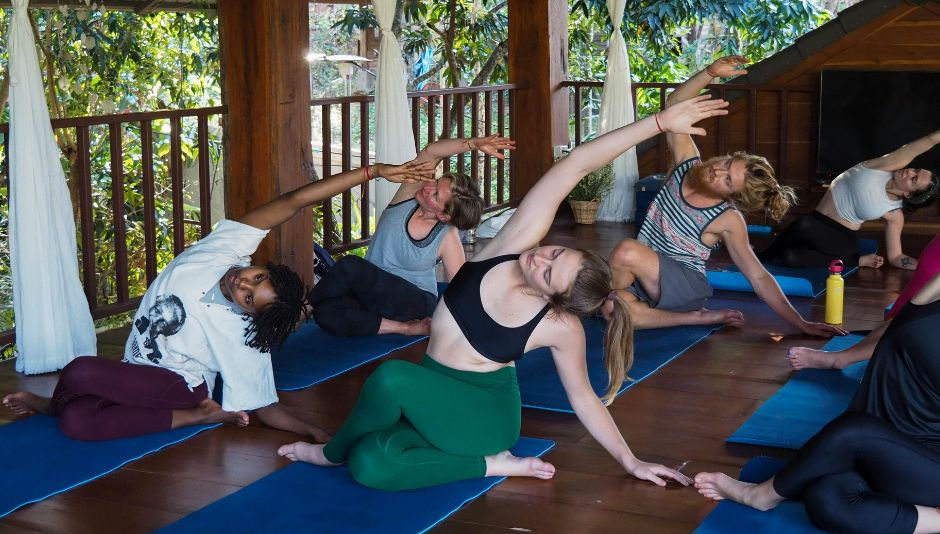5 Important Considerations for Getting Your First Tattoo
- Contributing Author

- Dec 12, 2024
- 4 min read
collaborative guest post
Getting your first tattoo is a significant decision that involves careful thought and planning. Tattoos can be a beautiful form of self-expression, but they are also permanent, making it crucial to consider various factors before taking the plunge. This article explores five important considerations for getting your first tattoo, covering aspects from design choice to aftercare, to ensure your first tattoo experience is a positive one.

1. Choosing the Right Design
The design of your tattoo is one of the most personal aspects of the process. It's essential to choose a design that resonates with you on a personal level, as it will be a permanent part of your body. Here are a few tips to consider when selecting your tattoo design:
Personal Significance: Consider what the design means to you. Whether it's a symbol of your heritage, a tribute to a loved one, or an expression of your beliefs, the tattoo should have a personal connection.
Research and Inspiration: Look for inspiration in art, nature, or even other tattoos. Platforms like Pinterest or Instagram are great for browsing different styles.
Simplicity vs. Complexity: Decide whether you want something simple or intricate. Simpler designs can be easier to execute and maintain, while complex designs may require more time and skill from the tattoo artist.
2. Finding a Skilled Tattoo Artist
Once you have a design in mind, finding the right tattoo artist is crucial. The skill and experience of the artist can significantly impact the final outcome of your tattoo. Here are some steps to ensure you find a qualified professional:
Research and Reviews: Check online reviews and ratings of local tattoo studios. Look for artists with positive feedback and a portfolio that reflects their expertise in the style you're interested in.
Consultations: Schedule consultations with potential artists. Discuss your design, ask questions about their experience, and review their previous work to ensure they can execute your vision.
Hygiene and Professionalism: Visit the studio to assess its cleanliness and professionalism. A reputable tattoo artist will maintain a sterile environment and follow safety protocols to prevent infections.
3. Understanding the Pain and Placement
Pain is an inevitable part of the tattoo process, but it varies depending on several factors, including the tattoo's placement and your personal pain tolerance. Here are some considerations for managing pain and choosing the right placement:
Pain Tolerance: Be honest with yourself about your pain threshold. Areas with more nerve endings, such as ribs or feet, tend to be more painful than fleshier areas like arms or thighs.
Size and Detail: Larger and more detailed tattoos may require longer sessions, which can increase discomfort. Consider starting with a smaller tattoo if you're unsure about your pain tolerance.
Visibility and Lifestyle: Think about how visible you want your tattoo to be. Consider your professional environment and lifestyle, as some workplaces have policies regarding visible tattoos.
4. Preparing for the Tattoo Session
Proper preparation can make a significant difference in your overall tattoo experience. Here are some tips to help you prepare for your tattoo session:
Hydration and Rest: Stay well-hydrated and ensure you get a good night's sleep before your appointment. Being well-rested and hydrated can help you endure the session better.
Avoid Alcohol and Caffeine: Refrain from consuming alcohol or excessive caffeine before your session, as these can thin your blood and potentially increase bleeding.
Dress Comfortably: Wear comfortable clothing that allows easy access to the area being tattooed. Loose-fitting garments can help you stay comfortable during longer sessions.
5. Aftercare and Long-Term Considerations
Proper aftercare is essential to ensure your tattoo heals correctly and maintains its appearance over time. Additionally, it's important to consider long-term factors such as ageing and potential removal. Here are some aftercare tips and considerations:
Follow Aftercare Instructions: Your tattoo artist will provide specific aftercare instructions. These typically include keeping the tattoo clean, avoiding sun exposure, and applying a recommended ointment.
Moisturize Regularly: Keeping your tattoo moisturized can prevent scabbing and ensure the colors remain vibrant. Use a gentle, fragrance-free moisturizer.
Sun Protection: Protect your tattoo from direct sunlight to prevent fading. Use a high SPF sunscreen on your tattooed skin when outdoors.
Aging and Maintenance: Over time, tattoos can fade and blur. Touch-ups may be necessary to maintain their appearance. Consider the commitment to upkeep when planning your tattoo.
Potential for Removal: While it's important to choose a tattoo you're confident about, circumstances may change, and you might consider removal in the future. Tattoo removal can be costly and time-consuming, so it's crucial to be sure about your decision. If you're in Melbourne VIC tattoo removal services are available, but it's best to approach your tattoo decision with permanence in mind.
In conclusion, getting your first tattoo is an exciting journey that requires thoughtful preparation and consideration. By carefully choosing your design, finding a skilled artist, understanding pain and placement, preparing adequately, and committing to aftercare, you can ensure your first tattoo experience is rewarding and fulfilling. Remember, a tattoo is a lifelong commitment, so take the time to make decisions that you'll be happy with for years to come.

































